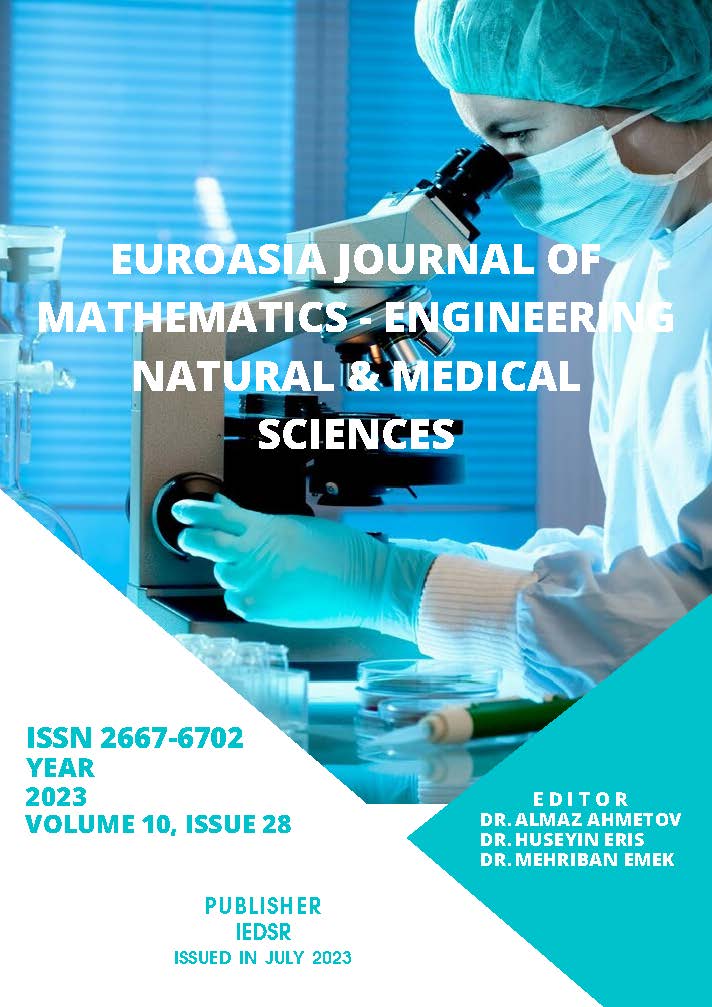Investigation of the Use of Nano Silica in the Production of Calcined Clay Additive Cement Mortars
DOI:
https://doi.org/10.5281/zenodo.8189315Keywords:
Strength, calcined bentonite, calcined sepiolite, nano silicaAbstract
The use of clays consisting of phyllosilicates, quartz and carbonates as building materials dates back to ancient times. Clays that have been calcined and have acquired pozzolanic activity form an important group of binder materials. In this context, various properties of cement mortars produced with bentonite and sepiolite clays calcined at 850 ºC were investigated depending on the amount of nano silica usage. 360-day flexural and compressive strength tests were carried out on 40x40x160mm cement mortar samples produced by reducing and replacing the clays to be used in the study 0%, 10%, 20% by weight, and nano silica 0%, 0.5%, and 1.0% by weight. According to these results, the highest flexural strength of cement mortar was 1.0% nano silica, 10% calcined bentonite and sepiolite ratios, respectively; 9.75 MPa and 9.47MPa; compressive strength; 58.41 MPa and 56.93 MPa were obtained.
References
Allo, W.A. & Murray, H.H., (2004). Mineralogy, chemistry and potential applications of a white bentonite in San Juan province. Applied Clay Science, 25, 237-243.
Abhilash, P.P., Nayak, D.K., Sangoju, B., Kumar, R. & Kumar, V., (2021). Effect of nano-silica in concrete; a review. Construction Building Materials, 278, 122347.
Akbulut, A., (1996). Bentonit. MTA Eğitim Serisi, 32, 78, Ankara.
ASTM C187-04, (2010). Standard Test Method for Normal Consistency of Hydraulic Cement. American Society for Testing and Materials. USA.
Bao, X., Tian, Y., Yuan, L., Cui, H., Tang, W., Fung, W.H. & Qi, H., (2019). Development of high performance PCM cement composites for passive solar buildings. Energy Building, 194, 33-45.
Bennadji, F.G., Beneu, B., Laval, J.P. & Blanchart, P., (2008). Structural transformations of Muscovite at high temperature by X-ray and neutron diffraction. Applied Clay Science, 38259, 267.
Brindley, G.W. & Pedro, G., (1972). Report of the AIPEA Nomenclature Committee. AIPEA Newsletter, No:7, 8-1.
Changling, H., Emil, M. & Bjarne, O., (1996). The treatment and pozzolanic activity of sepiolite. Applied Clay Science, 10, 337-349.
Demir A,. (2016). Sepiyolitli harçların mekanik ve fiziksel özeliklerinin incelenmesi. Electronic Journal of Vocational Colleges, International Multidiscplinary Congress of Eurosia.
Güneyisi, E., Gesoğlu, M., Özturan, T. & Mermerdaş, K., (2012). Microstructural properties and pozzolanic activity of calcined kaolins as supplemantary cementing materials. Canadian Journal of Civil Engineering, 39, 1274-1284.
He, C., Makovicky, E. & Osbaeck, B., (1996). Thermal treatment and pozzolanic activity of sepiolite. Applied Clay Science, 10, 337-349.
Hollanders, S., Adriaens, R., Skibsted, J., Cizer, Ö. & Elsen, J., (2016). Pozzolanic reactivity of pure calcined clays, Applied Clay Science, 132-133, 552-560.
İrkeç, T., (1996). Lületaşı, tabakalı sepiyolit, atapulgit (paligorskit). DPT VII. Beş Yıllık Kalkınma Planı Özel İhtisas Komisyonu, Diğer Endüstri Mineralleri Çalışma Grubu Raporu, 1, DPT 2421-ÖİK: 480, Ankara, 5-35.
Kavas T., Sabah E. & Çelik M.S., (2004). Structural properties of sepiolite-reinforced cement composite. Cement and Concrete Research, 34, 2135-2139.
Kaya, T., Karakurt, C. & Bayazıt, Y., (2015). Kalsine edilmiş bentonitin çimento harçlarında puzolanik katkı maddesi olarak kullanılabilirliği. 2nd International Sustainable Building Symposium, Ankara.
Khandelwal, S. & Rhee, K.Y., (2022). Evaluation of pozzolanic activity, heterogeneous nucleation, and microstructure of cement composites with modified bentonite clays. Construction and Building Materials, Volume 323, 126617.
Murray, H.H., (2018). Applied clay mineralogy today and tomorrow. Clay Minerals, 34, 39-49.
MTA, (2018). Dünyada ve Türkiy e'de bentonit. Ankara.
Raúl, F., Ruiz, A.I. & Cuevas, J., (2018). Formation of C-A-S-H phases from the interaction between concrete or cement and bentonite. Clay Minerals, 51, 2, 223-235.
Ritter, D.M., (1963). Inorganic reactions and structure. By Edwin S. Gould, Inorg. Chem., 2, 3, 664.
Savaş, M., Demir, İ., Güzelküçük, S., Şengül Ç. G. & Yaprak, H., (2014). Sepiyolit ikame edilmiş gazbetonun ısıl ve basınç dayanım özellikleri. Politeknik Dergisi, 17, 1 (Özel Sayı), 43-47.
Wei, J. & Genctürk, B., (2019). Hydration of ternary Portland cement blends containing metakaolin and sodium bentonite. Cement Concrete Research, 123, 105772.
Wu, C-R., Hong, Z-Q., Zhan, B-J., Cui, S-C. & Kou, S-C., (2021). Pozzolanic activity of calcinated low-grade natural sepiolite and its influence on the hydration of cement. Construction and Building Materials, 309, 125076.
Downloads
Published
How to Cite
Issue
Section
License
Copyright (c) 2023 Euroasia Journal of Mathematics, Engineering, Natural & Medical Sciences

This work is licensed under a Creative Commons Attribution-NonCommercial 4.0 International License.

